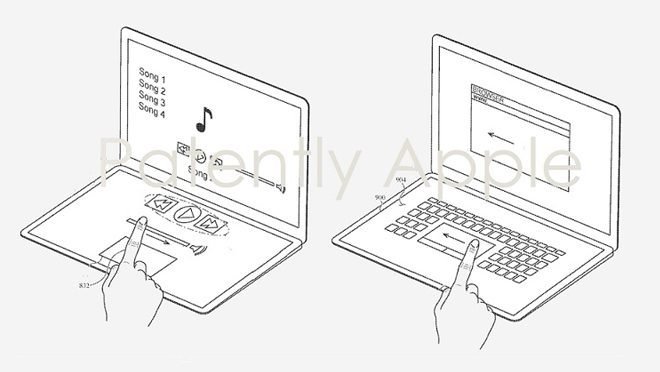Apple constantly comes up with innovative ideas to infuse them into their latest technology and devices. This time, they have patented a touch-sensitive input device with an adaptable surface.
The input device can be represented as a virtual keyboard having haptic feedback. It can also provide users with a variety of interfaces that could control music or video applications.

On November 24th, the U.S. Patent and Trademark Office officially granted Apple the patent for their invention, which covers an input device having an adaptive input surface and providing tactile feedback to a user. This particular input device may include a touch-based input surface over an adaptive display.
How does it work?
The working method of the adaptive input surface could be a little complicated to understand. Let us break it down for you. Suppose the input surface is included into an adaptable keyboard. The adaptable keyboard includes an enclosure housing a display and a cover sheet over the display defining an input surface. The display visually renders two user input regions defining keys of the adaptable keyboard.
An array of electrodes between the cover sheet and the display provides variable frictional feedback to tactilely indicate the locations of the user input regions on the input surface.
The adaptable keyboard further includes a force sensor which measures an amount of force applied to the input surface and a processing unit.

Moreover, the adaptive keyboard includes a touch sensor. The processing unit indicates the actuation of a first user input region in response to the touch sensor detecting a touch within the first user input region and the force sensor detecting an amount of force above a threshold value.
The processing unit also causes the frictional feedback within a user input region to change in response to the force sensor’s amount of force. The keyboard includes a memory storing multiple keyboard layouts, each defining locations of the user input regions.
As for the sensors, the adaptive keyboard may also include proximity sensors, such as touch sensors, which detect the presence and location of the user’s fingers.
However, the input regions may alternatively be defined in response to an additional user action, such as a gesture’s performance, touching or pressing the input surface.
This innovative idea of a new technical device is, however, still in the patents. Apple may or may not use the idea in its future devices. But if it succeeds to unify the adaptive keyboard technology with its devices, then Apple could provide a whole new experience closer to the feel of a physical keyboard.
In that case, these adaptive keyboards would not have mechanical or movable keys. Instead, the keyboard may have a flat, keyless input surfaces, such as a glass or metal layer, and may include touch and/or force sensing systems to determine when users touch and/or presses on the surface. Then, additionally, they can also provide numerous other features and functions beyond mere keyboard input.